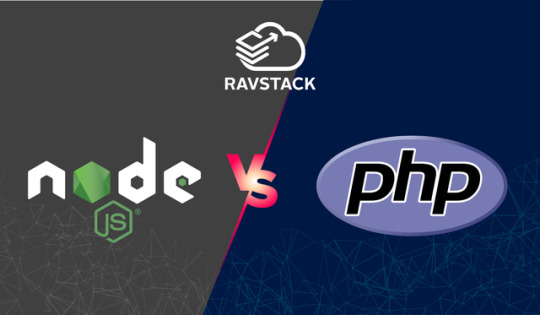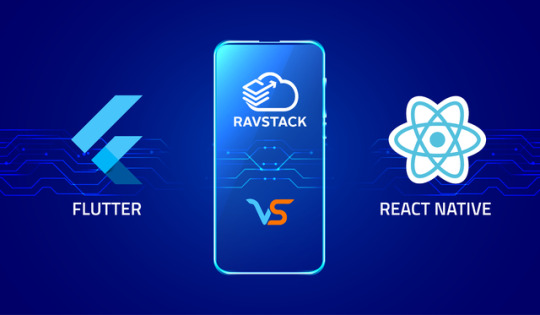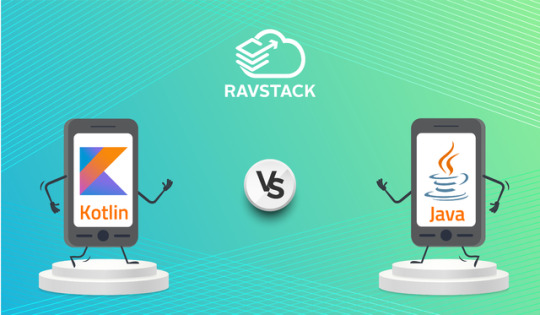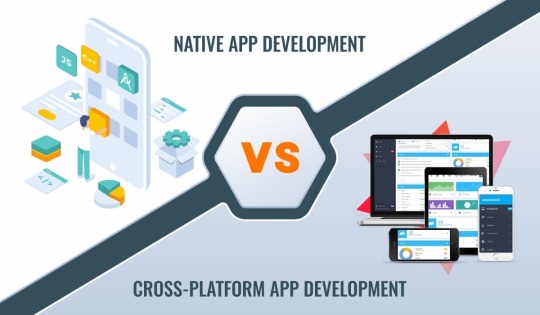RavStack is one of the leading IT Consulting services with two decades of industry experience offering custom software development in eCommerce, mobile, web
Don't wanna be here? Send us removal request.
Text
7 Benefits of Salesforce Commerce Cloud for eCommerce

Salesforce Commerce Cloud, formerly known as Demandware, is an easy-to-use and seamless eCommerce platform that is built with a predefined objective to help you grow your business, enhance previously hidden or unexplored brand opportunities, and convert more customers in easy and practical ways.
This cloud-based commerce platform is an absolute choice for every growth-oriented business that is looking for building unified and exceptional buying experiences across various channels for its customers by utilizing the best of B2C and B2B commerce solutions.
Why choose Salesforce Commerce Cloud?
Salesforce Commerce Cloud makes shopping fun, engaging, interactive, and personal on each digital channel — mobile, web, and social — and even explores the in-store experiences of customers. It is characterized by a multi-tenant architecture that offers a significant boost to the security and reliability features of the platform.
Salesforce Commerce Cloud provides a suite of features designed to enhance how brands connect with their customers at every step of the customer’s journey. Not only that, but it also creates an integrated transition from one channel to another, so every brand is supported across every medium and point of engagement.
Benefits of Salesforce Commerce Cloud
Commerce Cloud has some valuable features, such as
Continuous and seamless innovation
One of the most significant benefits of Salesforce Commerce Cloud is that it quickly vanishes the barriers to innovation that can be commonly related to the big majority of legacy commerce solutions.
By doing this, it enhances your business to stay in line with evolving customer requirements and today’s cutthroat and fast-paced industry.
Merchandising and catalog management capabilities
This is one of the biggest sectors that helps Salesforce Commerce Cloud in winning deals over other mediums, specifically in the fashion and lifestyle space where they are practically the industry masters. Features included in this segment are:
Advanced visual merchandising
Ability to schedule work such as the publishing of new items, etc.
Ability to make multiple catalogs.
Support for complicated product types such as variations, master products, bundled products, grouped products, product sets, optional products, etc.
Read More
0 notes
Link
Mobile app development
RavStack has an extensive experience in building digitally transformative, high performing mobile apps for iOS and Android.
iOS app development
Android app development
React Native app development
Flutter app development
iPad app development
PWA app development
Xamarin app development
Ionic app development
#iOS app development#Android app development#React Native app development#Flutter app development#iPad app development#PWA app development#Xamarin app development#Ionic app development
0 notes
Text
Node.js vs. PHP. Which is best for backend development?

Today, programmers around the world are using both PHP and Node.js for different projects. Many advocates Node.js as the future of web development, while many developers argue that the server-side is the unspoken domain PHP.
So, in this blog, we’ll discuss how using one for certain technologies can reap you maximum benefit.
Both PHP and Node.js can build apps of any complexity, and they are built around different concepts and structures. If you are a developer or an app owner choosing between these two programming languages, you should be aware of their significant benefits.
PHP web development
PHP is a server-side scripting language that is utilized to build static websites or dynamic websites or web applications. PHP stands for Hypertext Preprocessor, earlier known as Personal Home Pages. PHP scripts can only be used on a server that has PHP installed.
A survey by W3Tech revealed that around 79% of the sites in their data are made using the PHP programming language. Further, the ever-enhancing popularity of content management systems like Drupal, WordPress, Shopify, WooCommerce, etc. portraits how PHP has covered the backend development under its wings.
Benefits of PHP
Designed for web
PHP was invented explicitly for the web, unlike its competitors Java and Python. This means it is genuinely equipped to work with servers, HTML, and databases. And this is one feature that has made it a suitable server-side solution. PHP also works efficiently with profound web applications that require high computing and server-side rendering.
Quick development
Apart from the efficient code base, another feature that PHP is known for is its ease of deployment and compatibility with hosting services. Powering almost 79% of the web across the globe and being an industry standard for the past two decades, it is the best programming language for all physical or virtual servers.
Robust codebase, frameworks, and community
PHP has been here for 20+ years now. It means PHP has a massive community, rich codebase, documentation, and frameworks.
Selecting PHP for web development or web application provides you a variety of frameworks and CMS such as Joomla, WordPress, Drupal, Symphony, Laravel, and more. These platforms and frameworks also allow you to build and deploy an e-commerce website or blog very efficiently.
Node.js development
Node.js is a server-side platform built on Chrome’s JavaScript runtime for efficiently developing fast and scalable network applications. It utilizes an event-driven, non-blocking I/O model that makes it efficient and hassle-free for data-intensive real-time applications that run across distributed devices.
Node.js applications are developed with the use of JavaScript and can be run within the Node.js runtime on Microsoft Windows, OS X, and Linux. It also provides a rich library of several JavaScript modules, which simplifies the web application development using Node.js to a great extent.
Pros of Node.js
Performance and scalability
Node.js is a fast development language and can serve numerous concurrent events at a time. By adopting Node.js development, you can develop scalable server-side applications that utilize the maximum storage of a CPU device. This is what makes Node.js is the best programming language for real-time applications, single-page applications, and data-driven applications.
Flexibility
Node.js provides freedom and flexibility to the programmers when it comes to choosing the architecture and pattern. Also, the programmers access an unfathomable archive of NPM to choose from, making the development process more efficient and quicker.
One language across the stack
Several popular client-side frameworks such as React, Ember, and Angular are written in JavaScript, which is the prime language of modern browsers. While using Node.js server-side, you have all the advantages of one scripting language across your application development stack.
Read More
0 notes
Text
Flutter vs React Native – Which is the best tool for your startup?

As more and more people are accepting modernized technology, the demand for mobile apps has increased to a large scale. To walk parallelly with the growing needs of the clients and businesses, the constant inflow of the updated technology, frameworks, and platforms becomes a must.
Nowadays, cross-platform app development is becoming very popular among start-ups. With the help of this platform, developers can build various interactive apps.
Therefore, the two most popular mobile app development frameworks Flutter vs React Native are creating the buzz and fighting to prove itself to be the host of the cross-platform mobile app development. React Native vs Flutter was the most popular topic in 2018 and 2019.
React Native was introduced by Facebook, and in very less time, it became very popular and provides many benefits to organizations. However, Flutter, introduced by Google, is a newbie in the mobile application industry. Still, it creates high performing native applications and helps full stack developers to build cross-platform apps with ease.
We are here to provide a comparison of Flutter vs React Native performance, which is done based on various parameters. This comparison chart will provide some help to the start-ups as they can easily identify which framework will be the best suited for their mobile app development.
User Interface
While considering the user interface of an app and creating the block component, you will find a big difference between React Native and Flutter. React Native is based on native components, whereas Flutter works perfectly with the proprietary widget sets, owner widgets are the best for getting a customized UI design that will provide dynamism and native support.
React Native is the most dynamic framework that provides a much better user experience as a comparison with Flutter. Currently, there are three main UI libraries:-
React Native elements
Shoutem UI components
Native base components
Native appearance
Flutter has greater native appearance because of the access to device core functionalities whereas React Native has lower because it is dependent on third-party APIs.
Programming language
JavaScript
React Native utilizes JavaScript to build cross-platform apps. JavaScript is a very popular language in the industry at the moment. It is commonly utilized with React and other popular frameworks.
Dart
Flutter utilizes Dart programming language which was invented by Google in 2011 and is rarely used by programmers. Dart syntax is very simple to understand for JavaScript or Java developers as it supports most of the object-oriented concepts.
Technical architecture
Flux
React Native uses the Flux architecture from Facebook. In short, it uses the JavaScript bridge to communicate with the native modules.
Skia
Flutter utilizes the Dart framework which includes the inbuilt components and usually does not require the bridge to communicate with the native modules. Dart has so many frameworks, like Cupertino, and Material Design, which provide all the required technologies needed to build mobile apps.
Read More
#Flutter#mobile_app_development#React_Native#App_development#Android_app_development#ios_app_development#Dart#Flux#Skia#Java_Script
0 notes
Text
Kotlin vs. Java for Android app development

Kotlin vs Java is one of the most popular topics these days. When it comes to Android app development, Java language is the top priority language that hits the mind of coders. In 2018, It is the second most popular programming language (67%) on GITHUB after JavaScript (97%).
Despite the undisputable fame of Java as an object-oriented programming language, Android was long in need of a modern language. Kotlin fulfilled that need ever since it was announced as the official language for Android past years. On Udemy, programmers taking Kotlin courses spiked by 95% in 2017, making it the hot technical skill for 2018.
Since the beginning of 2018, around 1.5 million developers utilize Kotlin language and halfway through 2019, that number had doubled. With colossal brands starting to utilize Kotlin, support from JetBrains and Google, and an almost worldwide attachment to the language, it’s pretty safe to say that Kotlin will be around for a while.
So, both Java and Kotlin provide fierce competition for each other. Thus, we have significantly differentiated between Kotlin and Java language.
We will provide answers to some questions related to both Kotlin language as well as Java language. We will discuss advantages, significant differences based on various parameters, technical differences and much more.
Java & its benefits
Java is an object-oriented programming language. Using this highly recommended language, coders can create any program, and it is also compatible with almost any type of machine. It efficiently works in Linux, Windows and even for mobile devices in Android.
Currently, Java has one of the most essential and largest communities in the world. This language, both on the Internet and in the computer field, is necessary. Java can be used to make complex tasks more manageable.
Java is a portable language and easy to learn.
It carries security features and high performance
With the help of Java, you can create modular programs and reusable code. It is a robust, dynamic and efficient language.
It provides network-centric programming.
A massive number of IDEs and open source development tools have been written in Java, making it a highly recommended and strong development language.
Cases used by Java – Android-OSS, NewPipe, WordPress Engineering
Kotlin & its Benefits
Kotlin was first introduced by JetBrains in 2011, which is the originator of IntelliJ IDE, PyCharm, and many other popular IDEs. It was announced at Google I/O as the second official language of Android app development. Since then, It has been working in conjunction with the Google cloud platforms Gradle and Spring frameworks.
Kotlin as a potential candidate for the programming language of the year 2017 due to some interesting stats, its presence in the popular TIOBE index, Google’s official support, and its own research which confirmed that Kotlin grabs the interest of a surprising part of JAXenter’s readers.
Many organizations involved in mobile app development have already started to hire Android app developers who are proficient in Kotlin rather than Java. It is an open-source language & costs nothing to adopt.
Kotlin is approachable and can be learned quickly.
It uses existing Java Frameworks & Libraries.
It compiles to JVM bytecode or JavaScript.
Code reviews are not an issue in Kotlin.
Automatic conversion of Java to Kotlin.
Cases used by Kotlin – Pinterest, Trella, Car Lens.
Read More
0 notes
Text
11 Top React Native developer tools

React Native refers to a mobile development framework that accredits the organizations to develop multi-platform iOS and Android apps using the native UI components. React Native supports JavaScript features as it is based on JavaScript core runtime and Babel transformers.
In March 2015, after Facebook made React Native openly available on GitHub, it has been widely adopted by organizations and developers to build apps. The trend of using React Native applications is rising day by day due to its ability to develop useful native apps and excellent user interfaces.
With this ongoing trend, let’s see a list of React Native developer tools that help you develop great mobile interfaces.
List of top 11 React Native developer tools
Nuclide
Nuclide is a package launched by Facebook in integration with Atom editor. Induced with an array of great features like inspection of elements along with its permit of live edit to React Native components makes it a fantastic RN developer tool.
Due to the prominent and unique features embedded in Nuclide, it is mainly used for developing mobile apps.
Bit
Another feature-packed React Native tool is Bit, which allows developers to publish and share their React elements on the provided CLI tool. It is a prominent tool for producing a next-gen React Native component library.
It is a magical tool that permits you to render, search, install, and update any aspect from a new or third party project. Features like a rendered sandbox, auto component-docs, and more are all available on this tool platform.
Also, tracking dependency of each element and treating it as a stand-alone component of code is not less than wizardry.
One of the outstanding features is that; it ensures that every shared part is worth reusing through the building and testing them in an isolated environment. This testing takes place before they are exported from local projects to its collection bit.dev.
Visual Studio code
Visual Studio Code is one of the considerate programming tools which tightly packed with high-quality editing features. For achieving perfection while using it with React native, one must make the use of React Native- full pack extension.
Using this extension enhances the efficiency as it contains a collection of all React Native tools.
Xcode
Xcode works to build Apple’s environment, that means its principal use is to develop iOS and macOS. Its functionality is not bounded till building apps, but it also aids in installing iOS packages and performing debugging.
Another outstanding feature is that it acts as a bulletproof for RN apps for iOS and also allows custom build configuration.
Read More
0 notes
Text
Native vs. Cross-platform app development

The mobile app industry worldwide has undergone some major changes in the past few years. In 2017, Android and iOS, the two most popular operating systems used for smartphones, held a market share of 85.1% and 14.8%, respectively.
As of March 2018, there were 3.8 million Android apps in Google Play and 2 million iOS apps in Apple’s App Store.
With so much mobile app demand, programmers are having to work out new ways to stay one step ahead of the game. They’re searching for tools to cross the iOS-Android divide and provide exceptional performance, easy navigation, and great visual appeal that mobile app users usually demand. This is why cross-platform options are getting popular and functional.
Most development companies now utilize mobile apps as a platform for raising brand awareness, not a business of their own. With the increasing adoption of AI solutions (namely chatbots, smart wallets, messengers, etc.) experts even start to discuss mobile apps’ future!
Amid the controversy and chaos, the “native vs. cross-platform” mobile app development topic is very popular nowadays.
Let’s get into a talk about the differences between native and cross-platform applications.
Native app development
Native applications are developed using platform-specific programming languages. For example, some programming languages that can be utilized for developing Android apps include Java, Kotlin.
Objective-C and Swift are the languages used for the iOS mobile operating system. The native apps are developed specifically to be run on the target platform — with the support of all the native technologies and other hardware components such as camera and calendar.
Cross-platform apps are mostly developed by using React Native, Flutter, Ionic, Xamarin, and many more.
Advantages of Native mobile apps
High performance
Since the technologies utilized in developing native applications are platform-specific, the native code experiences direct access to the host’s operating system and functionalities.
This exceptional interaction with the native features of the mobile devices provides the high performance of the application, especially when rendering graphics or multimedia content.
Therefore, developing complex applications using native code could decrease the risks of downtimes from crashes or freezes.
Better User Interface
Since native apps integrate with the mobile operating system efficiently, customers are able to navigate a familiar interface without many problems, resulting in high user experiences (UX) and repeated use.
Read More
1 note
·
View note